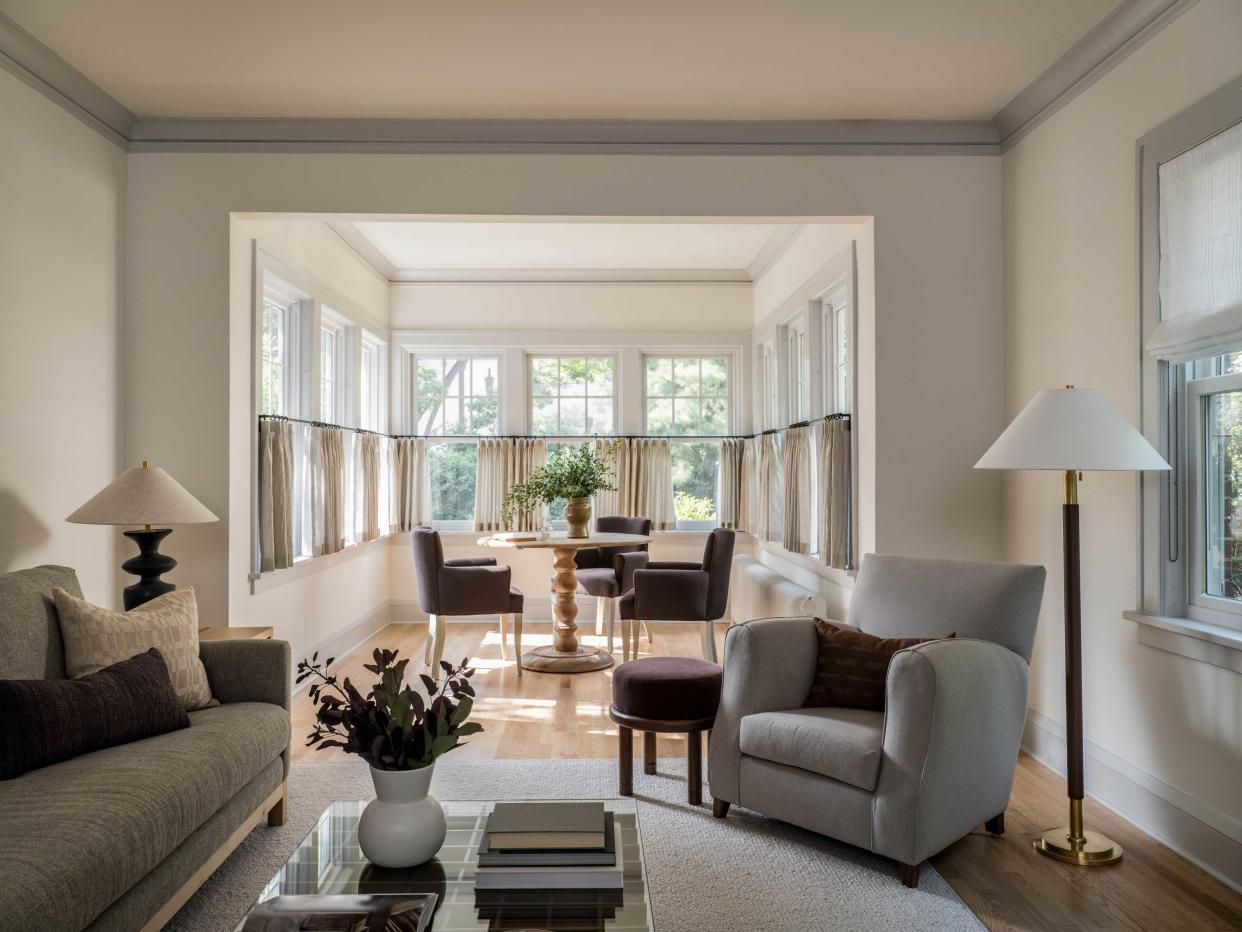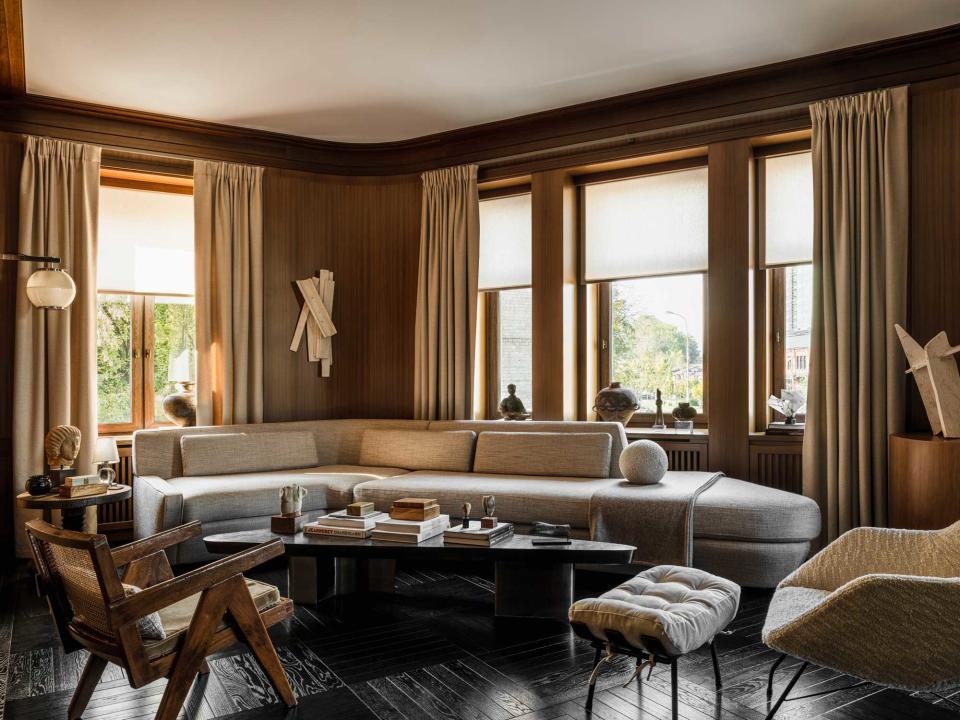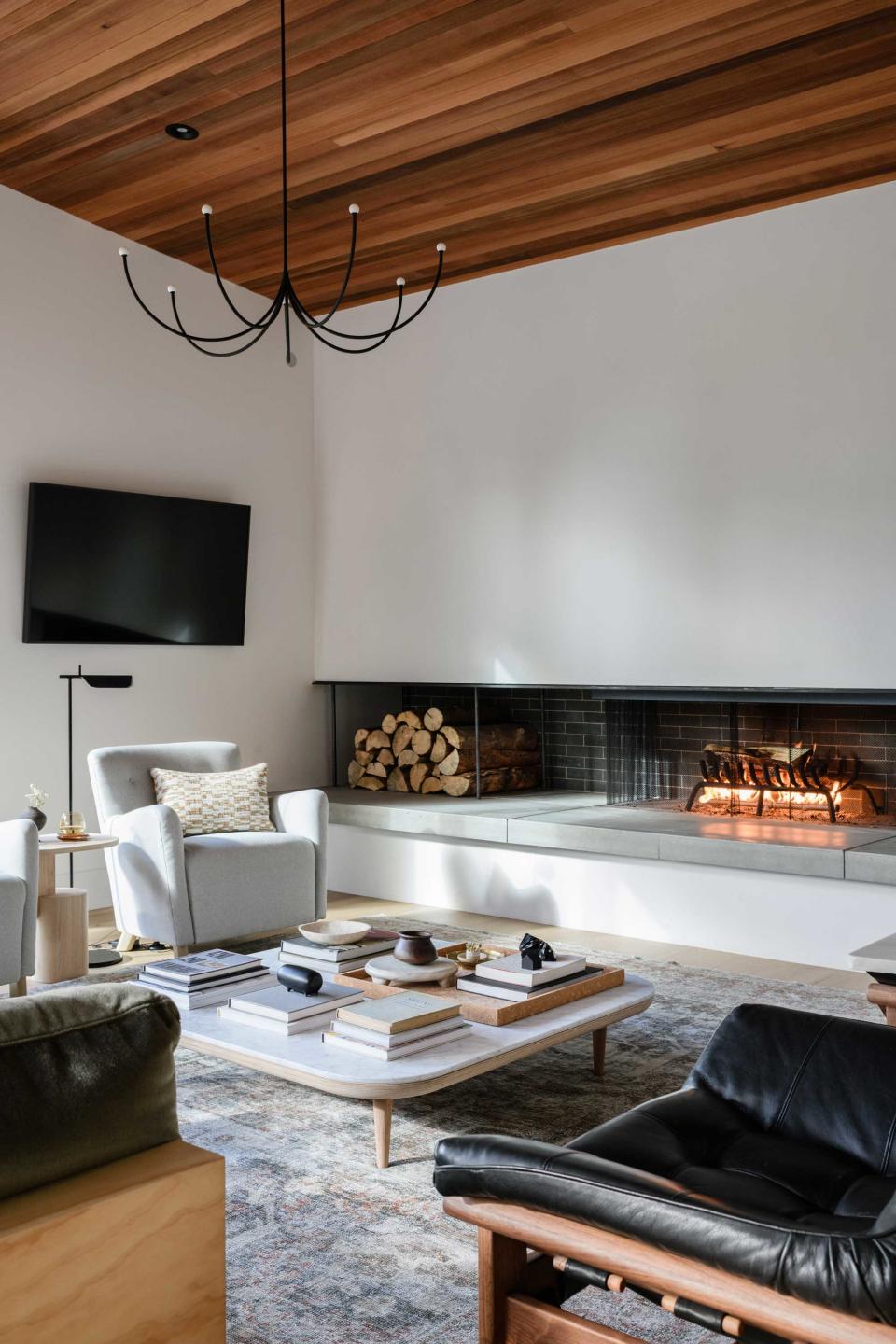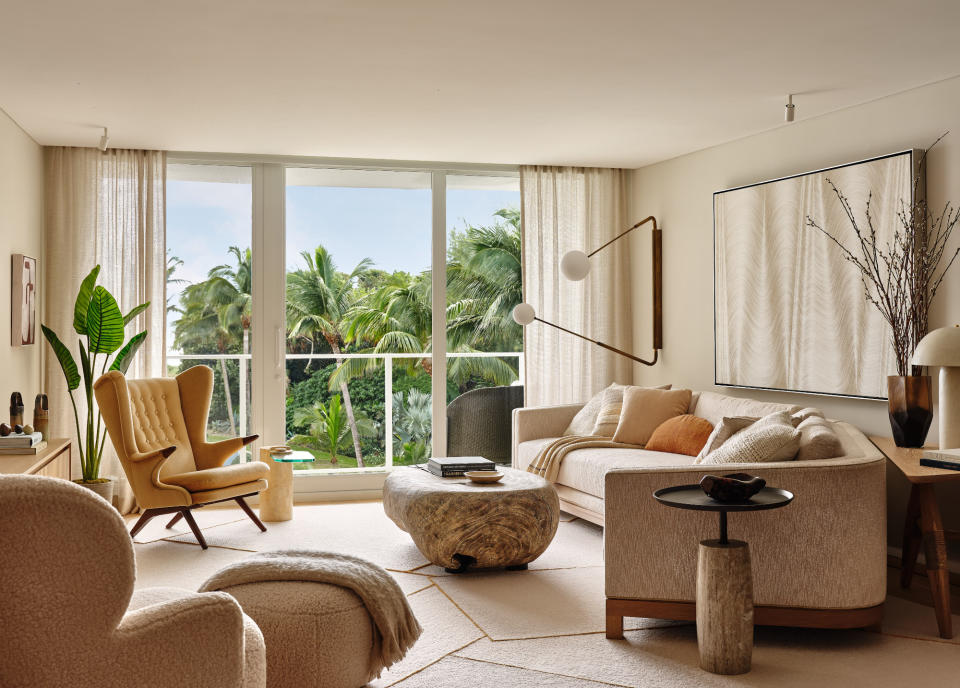Does every room need a ceiling light? There's one in particular that really doesn't, these designers agree

People have a lot of opinions about the "big light". It's generally what you'd describe as your ceiling or overhead light, and it's the ambient lighting for a lot of rooms. But why is it so divisive?
A quick scan of social media reveals that people think overhead lighting is generally too harsh and too bright for relaxing living spaces, and that this living room lighting should only ever be switched on in very specific circumstances.
I can't say I don't agree. And it turns out it's something that interior designers think about in their designs, too. These designers aren't even specifying ceiling lighting in some rooms. But which rooms can you remove your overhead lighting from successfully? And why is it worth it? We asked the experts.
Does every room need a ceiling light?

'It's such a cliché thing to say, but every space is different,' says Julia Miller, interior designer and founder of Yond Interiors. 'We find that most spaces do well with a center light fixture and additional layered lighting like floor lamps, table lamps or sconces.'
However, there are a lot of modern interior designers who are making an active choice to avoid using a "big light" in their schemes. 'A room's use helps dictate its lighting,' says New York-based interior designer Artem Kropovinsky, founder and principal of Arsight. 'Relaxing spaces like bedrooms and living rooms often skip the bright overhead and opt for softer, layered lighting,' he adds.
In fairness, this is where most people who are "anti-big light" are coming from. However, I think there's another reason why removing the ceiling light is beneficial to your design, especially if you have more minimalist leanings, or a small living room.
'We rarely use ceiling lights in our living spaces as we prefer the clean lines of a ceiling that is unobstructed,' says Toronto-based interior designer Montana Labelle. And Artem agrees: 'In tight spaces or rooms with low ceilings, I go for wall lights, floor lamps, or table lamps over big overhead fixtures,' he says, 'and for modern looks, overhead lights might feel out of place.'
In my own living room, I had the ceiling lights taken out over the seating area for this very reason. It removed a certain sense of clutter from the visual landscape of the room. And, to be clear, when I say these rooms don't have a big light, I mean none at all. No pendant light, no spotlights and no downlights, either (which in this writer's opinion don't have a place in a living room at the best of times).
Are there any exceptions?

As Julie says, every space is different, and there are some instances even designers who generally avoid ceiling lights feel they're right to use.
'We do feel having a central ceiling light can be most impactful in living spaces that have significant height, to draw your eye to the architectural elements,' says Montana.
As well as decorating a room with high ceilings, Artem says that there's one room that really should have one, even if it's in an open plan living room. 'A chandelier or pendant is a favorite in a dining room,' he says, 'emphasizing the table more than lighting up the whole room.'
What do you replace a ceiling light with?

So, now I've (possibly) convinced you to join the anti-big light brigade, what next? Well, it's not enough to simply remove your living room ceiling lights - you also need to bolster your lighting scheme to make sure your room isn't under-served by the lighting you do have. 'Layered lighting is the key to lighting success in our book,' says Julia from Yond Interiors. 'If the ceilings are particularly low or the ceiling light conflicts with another ceiling light, then we heavily consider how all the lighting coordinates.'
'In living rooms, small lamps and accent lights often set a relaxed mood better than a big overhead light,' adds interior designer Artem. 'You could also try recessed or track lighting for a sleek feel,' he adds.
And again, it's not just about how well these pieces light your living room, but how they look, too. 'We often opt for vintage flush mounts or sconces to add lighting but also an artisanal element to the space,' Montana Labelle tells me.

Matin wall sconce
Price $156
Material: Pleated PVC-laminated cotton shade

Electra table lamp
Price: $199.95
Material: Linen

Britta metal floor lamp
Price: $379
Material: Iron base with fabric shade
Are there any drawbacks to removing ceiling lights?
Those who are pro big-light largely lean on functionality as the main reason for including ceiling lighting in their schemes. However, it's worth drilling into whether there's really a case for this. It will, undoubtedly, depend on your home, and how the people who live in it behave.
Do you really need ceiling lights for cleaning, for example? This is most likely to be a task performed in the daytime, after all. The solution, instead of a ceiling light, may be elsewhere if you're finding yourself struggling to see in your living spaces.
'Use natural light,' says Artem. 'Windows and skylights can be a room's best light source, and you should adjust with curtains or blinds as needed.' The designer also recommends task lighting for those specific times you need a stronger light source in a living room.

